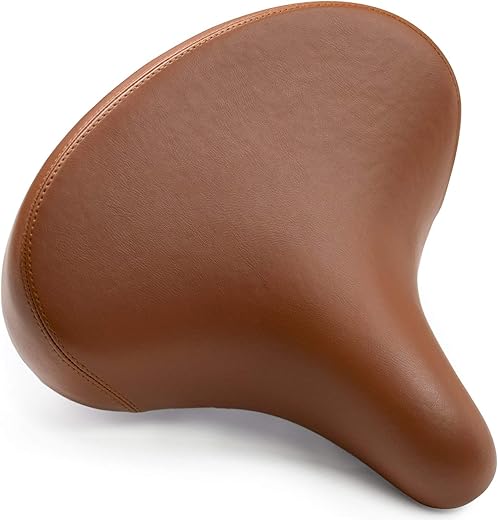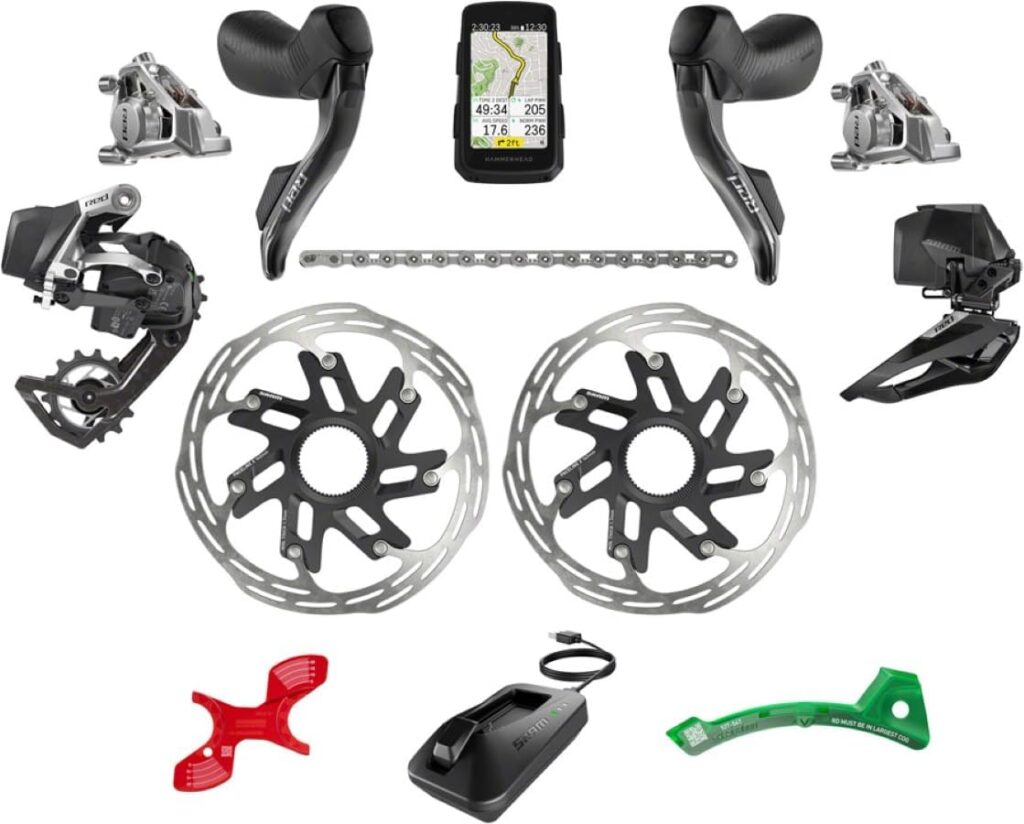Embrace the Elevation: Why Electric Bikes Are Game Changers for Hilly Terrain
As a passionate cyclist, I’ve always appreciated the exhilarating challenge of tackling hills. But let’s face it—those steep climbs can be daunting. This is where electric bikes come into play, transforming the cycling experience and making the seemingly impossible, a simple joy.
In this article, I will dive into the basics of electric bikes, exploring how they work and why they’re perfectly suited for hilly terrain. I’ll unpack the mechanics behind climbing, revealing how e-bikes tackle inclines with ease. Selecting the right bike for your riding style is crucial, so I’ll share insights on what to look for when navigating mountainous landscapes.
Finally, I’ll discuss real-world experiences of riders like you and me who have embraced these machines. We’ll also cover essential maintenance tips to keep your e-bike performing optimally on those challenging climbs. Let’s gear up and elevate our rides!
Understanding Electric Bikes: The Basics
Electric bikes, often referred to as e-bikes, represent a revolutionary shift in the world of cycling. At their core, e-bikes are traditional bicycles equipped with an integrated electric motor, designed to assist riders as they pedal. This added boost makes them perfect for navigating hilly terrain, allowing cyclists to experience the thrill of elevation without the exhausting effort typically required for steep climbs.
Components of an Electric Bike
To appreciate the benefits of e-bikes, it’s essential to understand their key components:
Types of Electric Bikes
E-bikes come in various styles to fit different riding preferences:
E-bikes function primarily through pedal assist; the motor engages when you start pedaling, offering a boost that makes it feel like you’re gliding over the terrain. This is particularly valuable in hilly regions, where even seasoned cyclists occasionally struggle.
The combination of motor assistance and a robust battery allows riders to tackle inclines that might otherwise be intimidating. The weight distribution of an e-bike, coupled with the added power, transforms daunting climbs into manageable challenges.
As we delve deeper into the mechanics of how e-bikes tackle hills, we’ll uncover the intricate relationship between design, motor technology, and rider experience. Let’s explore how these innovations come together to enhance our enjoyment of cycling in hilly environments.
The Mechanics of Climbing: How E-Bikes Tackle Hills
When it comes to conquering steep inclines, electric bikes (e-bikes) employ a set of technologies that redefine the cycling experience. The blend of powerful motors, energy-efficient batteries, and intelligent pedal assist modes work harmoniously to tackle hills with remarkable ease.
Motor Power and Placement
At the heart of e-bikes is the motor, which plays a critical role in climbing hills. Most e-bikes feature one of three types of motor placements:
Battery Life: Power on the Go
Battery life is another crucial factor affecting how well an e-bike performs on hills. Most e-bikes come with batteries ranging from 300 Wh to 700 Wh. The larger the battery, the longer you can sustain high assist levels when tackling tough inclines. Many riders find that batteries with higher capacity can last for a full day of riding in hilly areas, allowing uninterrupted adventures.
When looking for a suitable e-bike, consider models like the , renowned for its powerful battery and motor combination, perfect for hilly terrains.
Pedal Assist Modes
Besides the motor, the pedal assist modes significantly shape an e-bike’s climbing capability. Most e-bikes offer several levels of assistance, which can be adjusted based on the rider’s preference and the severity of the climb:
Real-World Application
Consider riding through a hilly neighborhood. When faced with a steep street, activating the sport mode on your e-bike shifts the effort from your legs to the motor, helping you tackle the incline smoothly while enjoying the scenery.
This combination of powerful motors, efficient batteries, and tailored support not only alleviates the strain of hill climbing but also opens up new routes and adventures for cycling enthusiasts.
As we continue to explore the best options suited for navigating these challenging terrains, remember that choosing the right e-bike can elevate your cycling experience in ways you’ve never imagined.
Choosing the Right Electric Bike for Hilly Terrain
Selecting the perfect electric bike (e-bike) for hilly terrain can make all the difference in your riding experience. With so many options available, knowing what to prioritize ensures you get a bike tailored to your needs. Here’s how to choose wisely.
Weight Matters
The weight of your e-bike has a direct impact on its climbing ability. Generally, lighter bikes are easier to handle on steep inclines. As you compare models, try to find a balance between durability and weight. A bike that is too heavy might exhaust you when the motor assistance wanes, while a lightweight model might lack the robustness needed to tackle rougher trails.
Tip: Look for e-bikes weighing around 40-50 pounds—this range typically combines strength and manageability.
Frame Geometry
The design of the e-bike frame can significantly influence your position and control on climbs. A slacker geometry can enhance stability, making it easier to maintain traction when navigating steep grades. It’s also beneficial to look for bikes with adjustable components, allowing you to fine-tune the fit to your personal comfort.
Recommended Models: Mountain e-bikes, such as the
Battery Capacity
Battery capacity is crucial when choosing an e-bike for hilly environments. A battery measured in watt-hours (Wh) indicates how far you can go, with many riders recommending a minimum of 500 Wh for hilly terrain. This ensures you can tackle those long, steep climbs without running out of power mid-ride.
Consider this: Many high-capacity batteries are designed to deliver consistent power throughout their life cycles, meaning you can enjoy the ride without worrying about frequent recharges.
Motor Type and Placement
The motor’s type and placement also play critical roles in hill-climbing performance. Mid-drive motors offer superior torque, allowing for better handling on steep slopes. By shifting the weight closer to the bike’s center of gravity, mid-drive motors enhance stability and control.
Example: For serious hill climbers, models like the
Test Rides
Lastly, nothing beats the experience of a test ride. Visit local bike shops to try out different e-bikes. Pay attention to how they feel on inclines, and test various assistance modes to gauge your comfort and control.
With these considerations in mind, you can compile a shortlist of electric bikes that suit your needs for hill climbing. I’m excited to delve into the real-world experiences of riders navigating hilly areas, as there’s nothing quite like hearing from fellow e-bike enthusiasts. Let’s uncover their stories as we continue this journey!
Real-World Experiences: Riding Electric Bikes in Hilly Areas
As an avid cyclist who lives in a region peppered with rolling hills and steep inclines, I can attest firsthand to the transformative experience of riding electric bikes (e-bikes) in such challenging terrains. These two-wheeled wonders have not only made my daily commutes more efficient but have also opened up new routes and adventures I never thought possible.
Daily Commutes Made Easy
One of my go-to e-bikes is a mid-drive model that provides ample torque for tackling steep hills. On particularly steep routes, I found myself dreading the climb when I relied solely on traditional bikes. However, with my e-bike, I discovered a newfound freedom. I could zoom past the sluggish traffic, feeling a breeze on my face instead of a tightening chest. The assistance of the motor transformed grueling uphill rides into enjoyable journeys.
Here’s how e-bikes have improved my commuting experience:
Weekend Adventures
On weekends, I enjoy researching new trails to explore. My favorite excursion led me to a local state park with a series of challenging hills. Inviting friends to join me was never easy due to their apprehensions about the tough climbs. Fortunately, e-bikes changed the game. Equipped with powerful batteries and user-friendly control systems, we set off into the green, tackling elevations together with ease.
Some standout moments from our trails include:
Embracing the Hills with Confidence
My e-bike experience affirms one thing: hills become less daunting when you have the right equipment. I have met numerous riders in similar situations who echoed my sentiments about the confidence boost provided by e-bikes. The ability to adjust pedal assist modes enables both seasoned cyclists and beginners to find their stride comfortably.
For instance, while I often use the eco mode for leisurely rides, I seamlessly switch to sport mode when faced with steep terrain. This flexibility is crucial when exploring new hills or when I’m in a hurry. The motor’s responsiveness makes navigating inclines almost intuitive.
Having experienced these firsthand benefits, I eagerly look forward to discussing how to maintain your e-bike to ensure it performs optimally, especially for those steep climbs ahead.
Maintaining Your E-Bike for Optimal Performance on Hills
As we transition from thrilling stories of conquering hills with e-bikes to the practicalities of keeping these machines in tip-top shape, it’s crucial to ensure your electric bike (e-bike) remains reliable and powerful on those upward climbs. Regular maintenance not only augments the longevity of your bike but significantly enhances its performance, particularly when tackling challenging inclines. Here are some key maintenance tips tailored specifically for e-bike users who love to ride hills.
Regular Motor Checks
The motor is the heart of your e-bike, especially when climbing steep gradients. I make it a habit to:
Battery Care
A robust battery is a prerequisite for hill-climbing performance. To extend battery life and efficiency, I follow these practices:
Tire Pressure
Under-inflated tires can hinder your e-bike’s ability to climb efficiently. Since climbing engages your tires more significantly, I regularly check tire pressure:
Routine Cleaning and Lubrication
A clean and lubed e-bike operates more smoothly. I dedicate time to:
Use the Right Tools
Having the right tools can make all the difference in routine maintenance. A portable repair stand is invaluable, allowing me to keep my e-bike upright for efficient cleaning and repairs. I recommend investing in:
With these tips in mind, you can ensure your e-bike is always ready to conquer the toughest hills, transforming the way you ride. By committing to routine maintenance, you not only prolong the life of your bike but also maximize your enjoyment and safety on every climb.
Now, let’s look forward to how electric bikes are shaping the future of cycling, elevating every ride new heights.
The Future of Cycling: Elevating Every Ride with Electric Bikes
In conclusion, electric bikes have revolutionized the way we approach cycling, particularly in hilly terrains where traditional bicycles can make even short rides daunting. By embracing this technology, we can overcome those steep challenges and enjoy a smoother, more exhilarating ride. The combination of pedal assist and innovative engineering ensures that every cyclist, regardless of fitness level, can conquer hills with ease.
I encourage you to consider making the switch to an e-bike if you haven’t already. The future of cycling is undoubtedly bright, with electric bikes leading the charge toward more enjoyable, accessible, and sustainable riding experiences. Let’s elevate our rides and embrace the hills that once seemed insurmountable!





The future of cycling looks bright! Can’t wait for more advancements in e-bikes. Just imagine e-bike races! 😂 #Dreaming
That would be epic! I’d definitely watch that! But who would win? The hills or the bikes? 🤣
Haha, great idea! E-bikes could really change the competitive scene in cycling!
I liked the article, but I wish it had more info on the upkeep of electric bikes. I’m a total newbie and a bit intimidated! 😅
We’ll be covering that in future articles! But basic maintenance includes battery care and regular check-ups.
Same here! I’d love to know the do’s and don’ts of e-bike maintenance. Any tips?!
I’m considering the VARUN Folding Electric Bike for my commute. Anyone have experience with that model? I need something lightweight but powerful!
Great choice! The VARUN is known for being compact and efficient on hills, plus it’s easy to store!
I have the VARUN! It’s super lightweight and folds easily, perfect for commuting! But make sure you charge it regularly.
E-bikes are fun until you realize how much you depend on them 😂. I took mine out for a spin and forgot to charge it! Oops!
Haha, we’ve all been there! Just make it a habit to charge after every ride.
Yikes! That’s a classic rookie move! Definitely keep that battery topped up, especially for hills!
Electric bikes are cool, but I wonder about maintenance. How often do you need to service them? I don’t want to end up with a dead battery halfway up a hill! 😬
Regular maintenance is crucial! We recommend checking the battery every month and servicing at least once a year.
Good question! I think it depends on how often you ride, but keeping the battery charged is key! Regular checks can help!
I’m a bit skeptical about the battery life on these things. What’s the average range on a full charge?
It varies, but most good ones last between 30-60 miles. Just check the specs before buying!
Exactly! The performance can vary based on terrain, so always look for user reviews.
I just got the MOONCOOL Electric Bike and OMG, it’s a total game changer! I live in a hilly area, and I can finally ride without feeling like I’m about to die 😂. The battery lasts longer than I expected too! Anyone else tried this bike? Thoughts?
I haven’t tried the MOONCOOL, but I hear great things! Is it good for steep inclines? 🤔
Yes, the MOONCOOL is specifically designed to handle inclines well. It has a strong motor that helps with climbing!
Just took my e-bike up a steep hill for the first time. I felt like a superhero! 🦸♂️ So much easier than my old bike! Anyone else feel like this?
Absolutely! It’s such a rush! Hills don’t scare me anymore! 😂
Glad you had a great experience! E-bikes really do transform the riding experience!
Honestly, I find electric bikes a bit cheating. What’s next? Electric skateboards? 😂 Just kidding! I can see why they’re practical, especially for hills.
Exactly! Electric bikes make cycling accessible to more people, which is a win for everyone!
Hey, if it gets more people biking, I’m all for it! Plus, it’s about enjoyment, right?